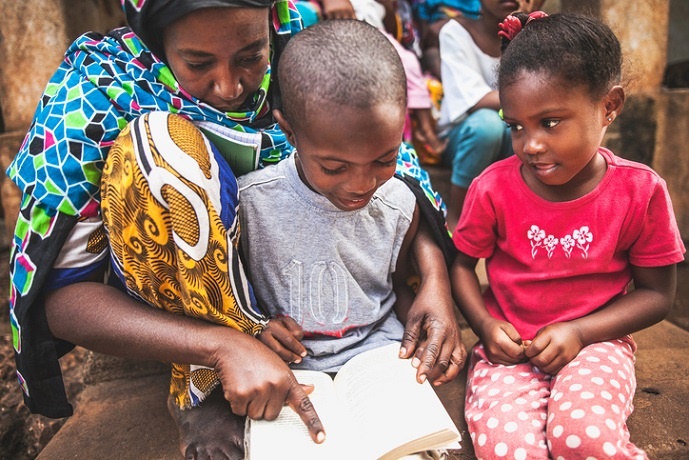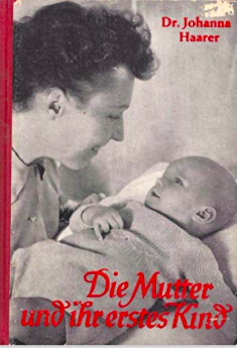
Most parents would agree that parenting is extremely complex and challenging. What works for one child, might not work for another – even within the same family.
Parenting practices and beliefs around the world can also be strikingly different. Japanese children, for example, are often allowed to ride the subway by themselves from as young as seven.
This would be considered unthinkable to parents in some other countries. Similarly, the idea of children going to bed at 6.30pm is horrifying to many Spanish or Latin American parents who see it as critical for children to take part in family life during the evening.
Researchers have explored cultural and historical differences in parenting practices for many years.
Studies tend to agree that three major factors often explain differences in parenting style: emotional warmth versus hostility (how loving, warm, and affectionate parents are towards children), autonomy versus control (the degree to which children are given a sense of control over their lives), and structure versus chaos (how much children’s lives are given a sense of structure and predictability).
Research shows that differences in these key features of parenting can have significant implications for child development. Indeed, the emotional bonds (“attachments”) that children have with their parents or caregivers can have lasting effects.
At the centre of the study of human relationships are ideas from attachment theory. Essentially, attachment theory focuses on the “psychological connectedness between human beings.”
The theory looks at the quality of the intimate bonds we make during the course of our lives, with a specific focus on parent-child relations.
Also see: Inuit, Aboriginal and other indigenous discipline methods from around the world
How has your cultural heritage played a role in your parenting style? Tell us, and we could publish your email. If you want to be anonymous let us know.
Attachment theory explained
John Bowlby formulated his ideas on attachment theory during the 1950s. He worked as a child psychiatrist at the Tavistock Clinic in London during World War II – noting the devastating impact of maternal separation and loss on child development.
Working with Mary Ainsworth, a Canadian psychologist, Bowlby provided support for the idea that mothers and children are mutually motivated to seek proximity to one another for survival.
He argued that a mother’s sensitivity to her child’s desire for closeness and comfort was a critical factor in shaping attachment and child development.
This sensitivity relates to a mother’s ability and capacity to detect, understand and respond appropriately to her child’s cues around distress and threat.
If her baby is distressed, a securely attached mother is attuned to the distress – she detects it, she is motivated to alleviate it, and she offers a set of soothing responses to do so.
Leading attachment researchers have argued that a consistent lack of such maternal sensitivity in infancy and early childhood results in a belief that the world is unsupportive and that one is unlovable.
Read more: Why everyone should know their attachment style
Since Bowlby’s initial volume, Attachment and Loss, in 1969, there have been more than 20,000 published journal articles on the topic of attachment.
The literature strongly suggests that if we deny children sensitive care during the early years, there can be significant negative consequences for their emotional and relational life.
The key principles of attachment theory have become embedded in contemporary Western ideas about parenting. And the language of attachment theory underpins the “attachment parenting movement” – which advocates methods such as co-sleeping – where babies and young children sleep close to one or both parents – and feeding on demand.
Attachment theory has also influenced policies about time spent in day care and time away from parents during the early years – such as the generous maternity and paternity leave entitlements that ensure Swedish parents are able to care for their children up to the age of eight. And it has also influenced guidelines on early years educational practice – in the UK for example, the role of a child’s “key person” (their main contact) within early years education is informed by attachment theory.
This cultural tide reflects a profound movement towards a “child-centred” approach to parenting, which puts the needs of the child at the centre of their learning and development.
Some argue, however, that this has shift has negative consequences. US writer Judith Warner suggests that attachment theory has fuelled a culture of “total motherhood”, in which mothers are placed in a demanding position of “total responsibility” for their child’s needs.
Attachment parenting, she says, pressures working mothers (particularly) towards a life where they must perpetually work a double shift – both at home and in the workplace – in the interest of their child’s development.
Nazi child rearing
In contemporary Western societies, emphasis and value are placed on the development of our unique “self” and a private emotional world. And attachment theory’s child-centred focus on the emotional needs of infants – and how parents respond to them – lends itself nicely to this value system.
But this hasn’t always been the case. A look at parenting in Nazi Germany and how subsequent generations have struggled to bond with their children raises questions about what happens when societies engineer beliefs about parenting that are starkly at odds with the propositions of attachment theory.
German historians and psychologists have written extensively about the works of the Nazi educator and physician, Johanna Haarer, whose baby-care manual, The German Mother and her First Child – published by the prolific Nazi publisher Julius Friedrich Lehmanns – sold around 600,000 copies by 1945.

Haarer’s manual is most notable for parenting strategies and beliefs that contradict attachment theory. To some extent, her work could be accurately described as an “anti-attachment manual”. She said that babies should be separated from their mothers for 24 hours after they are born, and they should be placed in a separate room.
This was thought to have the added benefit of protecting the baby from the germs of those outside the family. It was also said to allow the mother the necessary time to recuperate from the stresses of birth.
This separation, Haarer instructed, should continue for the first three months of a baby’s life. A mother could visit the baby only for strictly regulated breastfeeding – no longer than 20 minutes – and she should avoid playing or dawdling around. Haarer believed that such separation was a critical part of a baby’s “training regime”.
If a baby continued to cry after it had been fed on schedule, if it was clean and dry, and if it had been offered a dummy, “then, dear mother, become tough” and simply leave her to cry.
Haarer’s understanding of babies was that they were “pre-human” and showed little signs of genuine mental life in the first few months after birth.
Crying, she believed, was simply a baby’s way of passing the time. She strongly advised mothers not to carry, rock or attempt to comfort crying babies. It was suggested that this would lead babies to expect a sympathetic response and ultimately to develop into a “little, but unrelenting tyrant”.
Not giving too much attention to babies was also, for Haarer, a critical part of their training. She argued that it “is not a sign of special motherly love if one showers one’s child continuously with tenderness; such doting love spoils the child” and will in the long run “emasculate” young boys.
Haarer’s beliefs about parenting reflect values that were deemed important for life in the Third Reich.
She believed that it was necessary for every German citizen to be “a useful member of the Volksgemeinschaft [national community]” and strongly opposed child-rearing practices that furthered children’s individuality. A child had to learn “to integrate into the community and to subordinate his wishes and endeavours for the sake of the community”.
Ultimately, her work reflected and shaped child-rearing practices that aligned with the goals of the Hitler Youth movement.
Parents were encouraged to produce children who could be integrated into the community, showed no signs of self-pity, self-indulgence or self-concern, and were brave, obedient and disciplined. Advice centres and training courses for mothers based on Haarer’s ideas were a tool for the inculcation of Nazi ideology.
Wider implications
Attachment theorists such as Klaus Grossmann have suggested that the Nazi child-rearing movement reflected a set of social, historical and political circumstances that probably ensured a generation of young children were raised in the absence of attachment security.
He argued that such large scale, national neglect mirrored what was found in Romanian orphanages under Nicolae Ceausescu’s rule from 1965 to 1989. Here, many children were brought up in terrible conditions – where violence was used to humiliate and control on a daily basis.
As a result, children who grew up in these Romanian Orphanges were shown to have a dramatically increased risk for major problems with insecure attachments, sociability and indiscriminate friendliness – as well as significant differences in brain development.
For these children, a lack of love and connection was found to be associated with anatomical differences in key regions of the brain.
A major difference though, is that Haarer’s ideas reflected organised, intentional ideology cloaked in scientific credibility, as opposed to being the byproduct of conflict of displacement.
Sociobiologists Heider Keller and Hiltrud Otto have questioned whether such periods in German history have played a role in shaping parenting for future generations.
In their book chapter, Is there something like German parenting?, they argued that it is difficult to say whether such powerful historical trends in child rearing set a tone that continues to exist as a dominant force in Germany today.
Indeed, since World War II, child-centred philosophies and practices from the Western world have taken root in German society.
And high levels of immigration have meant that there are many ideas and beliefs about parenting in contemporary Germany that sit alongside these generational trends. So it’s likely that the influx of these different cultural and historical beliefs has helped to create a society with a myriad of parenting practices that have diluted the impact of historical trends.
Many caregivers
Much of the contemporary Western evidence suggests that, in contrast to what the Nazis thought, attachment still plays an important role in many societies when it comes to raising children – even though the ways in which such attachments are arranged can vary dramatically.
And while researchers have provided evidence that certain features of attachment may be universal, others can vary remarkably from culture to culture.
It has been presumed, for example, that there is a universal need and motivation for all infants to form attachments to caregivers. They are thought to be neurologically hardwired to seek close attachments and to be equipped with a behavioural repertoire that has evolved to facilitate this.
But how such attachments are formed (and with whom) can differ. Bowlby’s attachment theory emphasises the importance of an infant caregiver bond – most exclusively with the mother or a primary caregiver. But this is not universally true that has to be mother or primary care giver and is largely a reflection of Western middle-class societies.
Research in other cultures has revealed different ways of responding to the universal need for attachment security in infants. Otto’s doctoral research, for example, explored attachment patterns in 30 children from the north-west Cameroonian Nso community.
Her data revealed some fascinating differences around attachment. Nso mothers tended to have very different beliefs about the value and importance of an exclusive mother-infant bond.
In fact, they often discouraged maternal exclusivity, believing that to provide optimal care, many caregivers is best. As one mother noted: “Just one person cannot take care of a child throughout.”

Nso children are required very early to control their emotions.
It was important to Nso mothers that children did not develop an exclusive attachment to them and developed equally close bonds with older siblings, neighbours or other children in the community: “[Following only one person] is not considered good, because I want her [the baby] to be used to everybody and love everybody equally.”
And as one mother noted, higher maternal death rates increased the importance having many caregivers to look after children:
Following only me? For me I don’t think it’s too good for her, because like now if she keeps on following only me, loving only me, if I’m not by her side now or if I maybe die, who will take care of her? She needs to at least love everybody or try to be used to everybody, so that in case I am not around, anybody can take care of her.
For the Nso, actively forcing their children to develop close bonds with other members of the community was seen as good parenting, as was frightening children to discourage exclusivity between a mother and child:
I force him to go to other people. When I see any person, I would like to force the child to go to them, so that I should not be the one who is taking care of the child. Because it is not possible that I can be taking care of him alone. He would be disturbing me most often. It means I will not be able to do any other thing.
Otto explained that “Nso mothers train their children towards Nso socialisation goals”. This involves producing calm and obedient children who are well suited (and not resistant) to being loved and cared for by many carers. To this end, they discourage the maternal exclusivity that many attachment-based Western parenting models advocate.
Parenting values
Other researchers have identified similar cultural differences. Anthropologist Courtney Meehan’s work with the Aka, a Congo Basin tropical forest foraging community, revealed that infants have about 20 caregivers interacting and caring for them on a daily basis.
There’s also anthropologist Susan Seymour’s work on Indian parenting, where exclusive mothering is the exception:
India provides an excellent case study for examining multiple childcare. Even in a context of rapid change and modernisation, my research and that of others indicate that exclusive mothering is the exception, rather than the rule and that the concept of maternal indulgence – that is, a mother focused solely or primarily on responding to and nurturing her child – is itself problematic.
German researchers have also suggested that mothers and fathers may have unique ways of developing a secure attachment bond with their children.
The pathway to secure attachment for mothers may be through sensitive care-giving responses in times of distress. But they identified that fathers were more likely to build secure attachment bonds through sensitive play – play that was harmonious, attuned to the child, and cooperative.
These studies show that child-rearing values are a reflection of our culture. They are not universal. And they are vulnerable to generational changes.
In the contemporary Western world beliefs about attachment and parenting have a strong connection to Bowlby’s original framework.
These ideas and beliefs have played a critical role in the move towards a healthier society for child development and well-being. But given the historical and cultural diversity in parenting and broader social values, there should be caution about advocating attachment theory as the “only” way.
In the end, perhaps it is comforting to know that parenting is so diverse and that there isn’t a one-size-fits-all model.![]()
Sam Carr, Senior Lecturer in Education with Psychology, University of Bath
This article is republished from The Conversation under a Creative Commons license. Read the original article.
Chat back:
How has your cultural heritage played a role in your parenting style? Tell us, and we could publish your email. If you want to be anonymous let us know.




 Publications
Publications
 Partners
Partners















